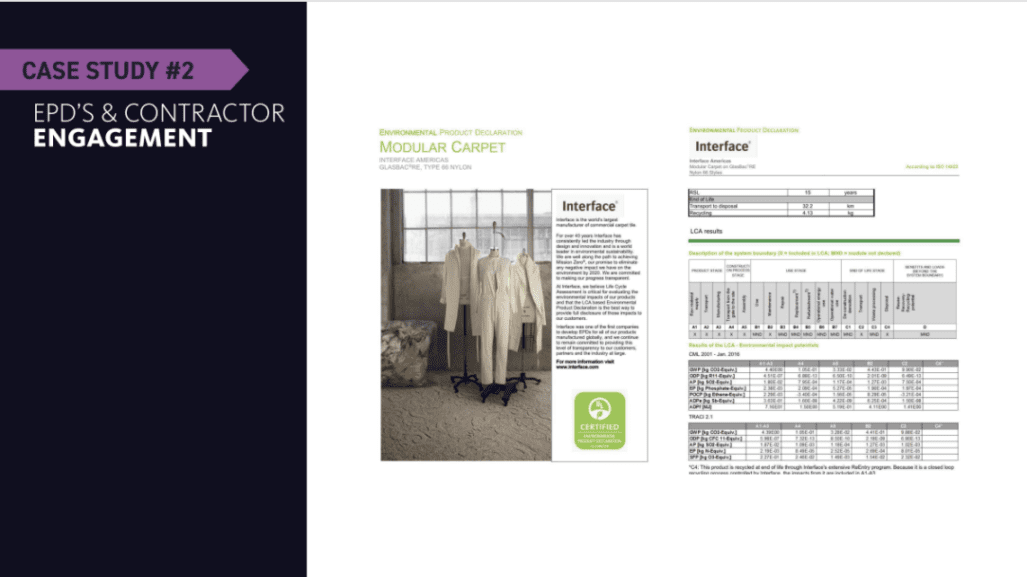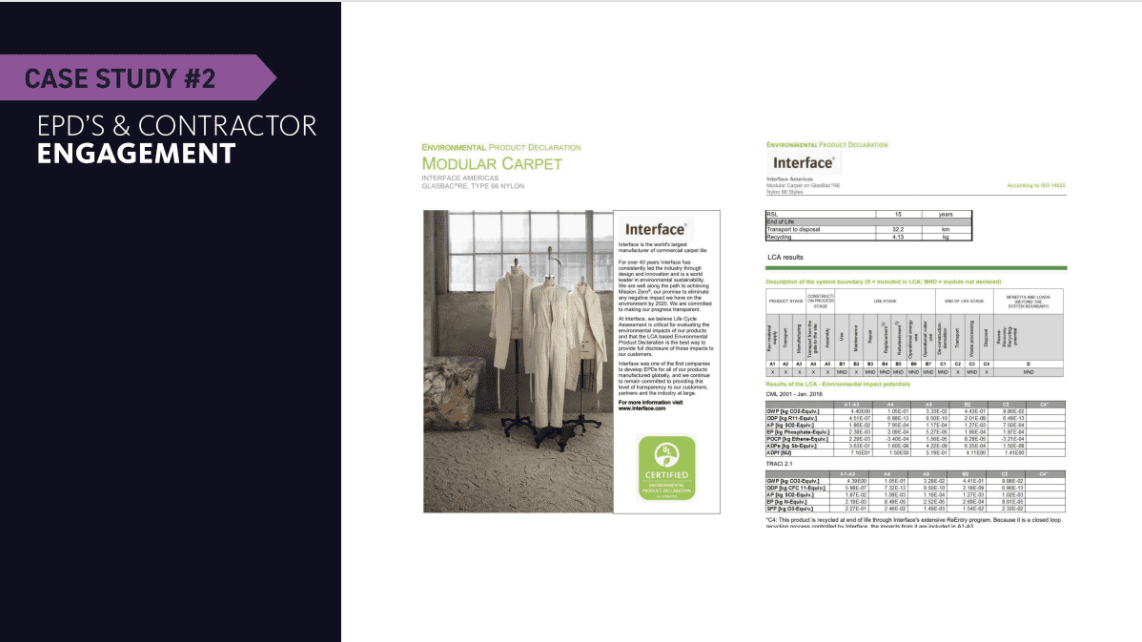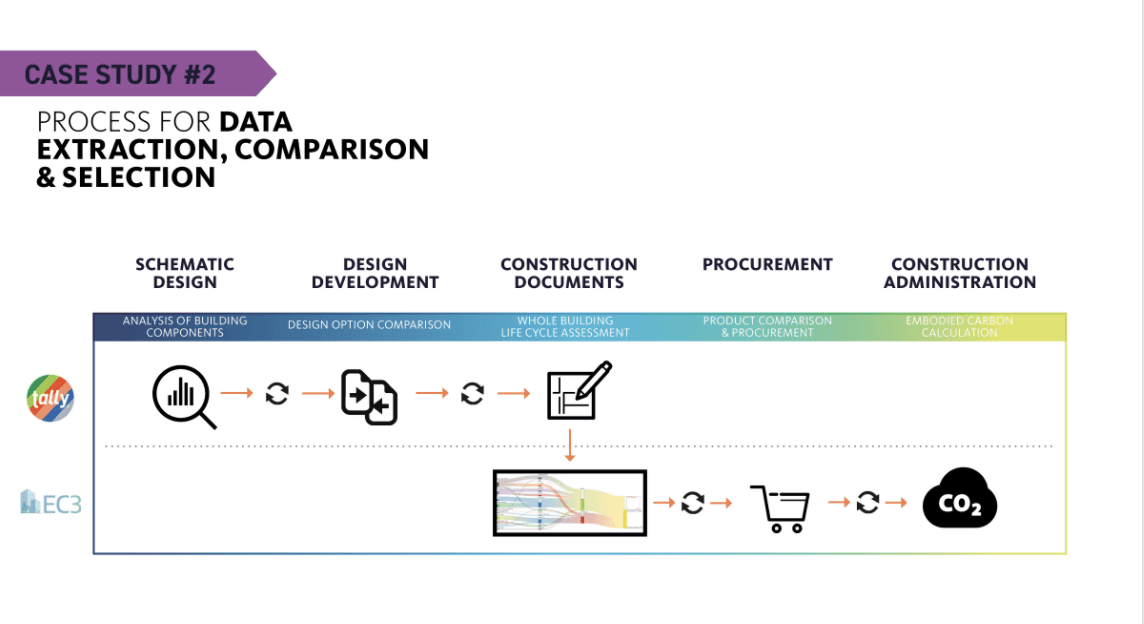Greenbuild 2020 session review:
We’re glad clients are now asking if their carbon footprint will be lower if they don’t tear down the old building but renovate it.
In early 2019, Gensler San Diego began working closely with Interface in combination with the materialsCAN effort to develop an embodied carbon case study. This initiative focused on reducing embodied carbon on a current project by reviewing the embodied carbon performance of the baseline material selections & comparing performance to best in class material selections. Multiple product attributes were assessed but global warming potential (GWP) was the main driver in determining best in class selection.
This session will focus on two of the main sticking points in our case study.
1. The amount of time & effort it took to create visuals to illustrate the data we worked hard to quantify.
In order to be socially responsible & sell this sustainability-focused story to our clients, we needed to prove its’ worth. We quickly realized we needed to provide an accelerated method to export data in a clean & consistent manner. Gensler San Diego’s Design Technologist’s focus is to improve our technology workflow to reduce the complexity of product comparisons. He will dive deeper into the process of estimating the impact of embodied carbon simulation in buildings using computational methods on live models. He’ll also discuss the usage of carbon databases and computational methods to create a carbon analysis loop.
2. The cost involved in choosing ‘best in class’ products in lieu of original ‘baseline’ products.
The most asked question when presenting this case study is how it affects the bottom line. Our collaboration with Skanska will focus on developing a strategy for comparing product attributes and understanding the cost implications related to procurement, shipping, material cost, aesthetics & performance. We will also dive deeper into the process of review & collaboration with the design team.
LEARNING OBJECTIVES:
Upon completion, participants will be able to understand the importance of addressing embodied carbon in building finishes, no matter the project size
Upon completion, participants will be able to identify resources to complete a baseline & best in class (lower embodied carbon) comparison of interior finishes
Upon completion, participants will be able to understand a method & the positive impact of embodied carbon finish comparison in buildings using computational methods on live models
Upon completion, participants will be able to identify the attributes (aesthetics, performance, shipping, material cost) required for review in completing a cost comparison of baseline vs best in class finishes
CE HOUR(S): 1
GBCI, AIA LU HSW
Learning Level: Intermediate

Get $30 off your Aptera Pre-Order
Click this link and you’ll receive a promo code for $30 off an Aptera pre-order. The 2nd Generation Aptera launched Dec. 4, 2020 and is on track to be the first self charging electric vehicle. The two-person, three-wheeler is covered with solar panels which allow self-charging but it also comes with a plug for charging. For every person I refer, I’ll earn a $1,000 credit towards an Aptera. After referring 26 people, I’ll score a free standard edition model. I’m a volunteer Aptera Ambassador, read more about this incredible solution to beautiful design and the ultimate in sustainability! #aptera #apteramotors




